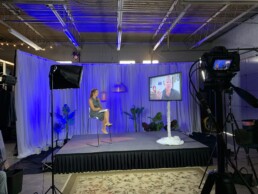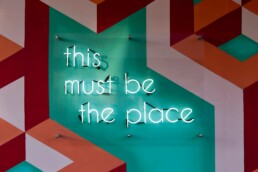Live events may always have our heart, but virtual helps us smile right now
November 2, 2020Virtual & Hybrid Events
Things just aren’t easy now, for pretty much everyone. Sometimes it’s even tough to think about all the ways we used to be able to get together and connect only a year ago... And that’s just the baseline these days. We’re not trying to bum anyone out here, but we think about this stuff.
Lately, if anything funny or cool or interesting does happen, it seems to be happening in the virtual world. Like, Shaq being too big for even virtual NBA bleachers. Or Shia LaBeouf smoking weed in his truck during the virtual Fast Times at Ridgemont High table read... The virtual world, and virtual events, feel light and fun right now, because they feel more natural. And to be honest, more safe. Maybe hybrid events will get there soon. We hope. But a packed convention hall is sadly not happening anytime soon.
In fact, one of the reasons we built Expo Pass was to help organizers get thousands of people into an event space as fast as possible -- not sitting in front of their webcams. Sure, we had ideas about how virtual events could change everything, but live events were king... Until the world made it clear that live events were in fact, not king… And we had our first freak out. And then we quickly decided to pivot -- to utilize the strong platform that we had already built for live events, to support virtual events in every form. Including a new attendee interface to spur engagement between attendees and sponsors/exhibitors. And we also added streaming, obviously.
The Expo Pass platform now gives organizers the power to plan events that might be live, hybrid, or virtual, and then decide on the right format whenever it feels right. The branded registration and check-in process stays the same, and everything organizers build in Expo Pass stays intact in any event format. So switching to virtual, or hybrid, or maybe even making the leap to live one day, becomes a no stress decision. Which is what we all need right now.
It’s hard to tell how everything is going to end up. But after a few months of this new normal, it’s clear that events still make sense. They can still be good fun. And maybe even make the day a little easier. And that’s what we want to be a part of. Now more than ever.
We would love to share some ideas and practices we have seen while helping hundreds of event planners produce virtual events. Our Zooms are always on, literally, and we’re here to help out in any way we can. To schedule a chat, please visit www.expopass.com/lets-talk.
Written By: The Expo Team
What You Need to Know About #HTSOnline
August 31, 2020Technology,Venues,Risk Management,Attendee Engagement,Event Trends and Tips,Management,Virtual & Hybrid Events
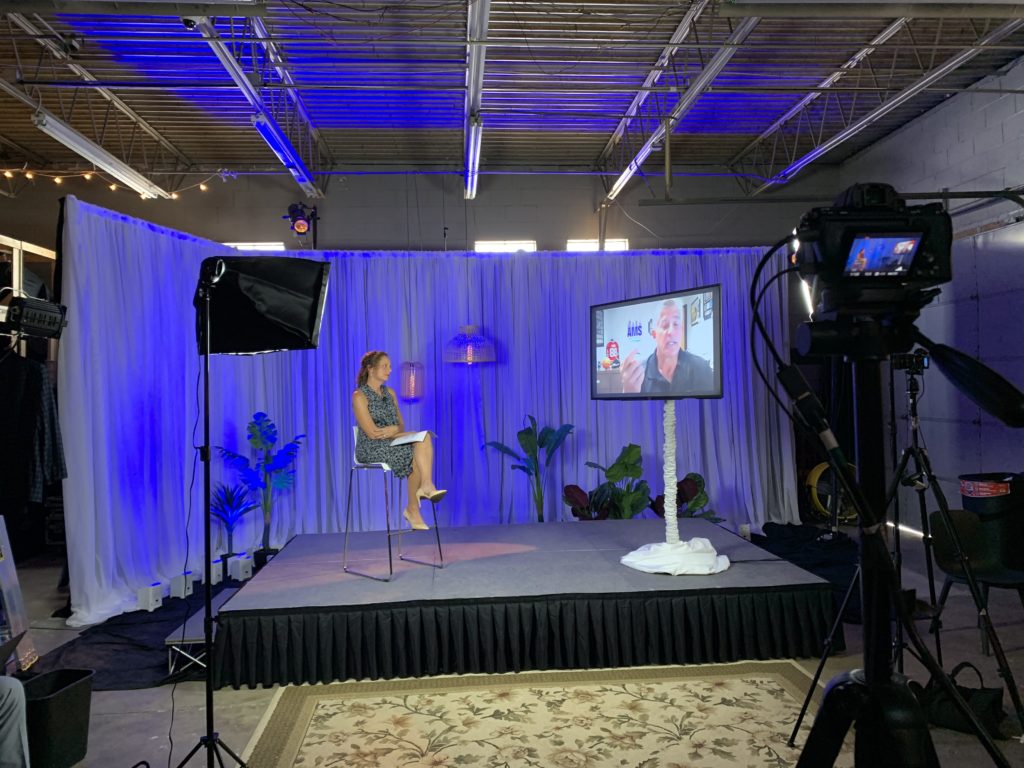
The Hospitality & Tourism Summit is coming at you completely online for its 19th annual year! So, what does that mean? How can a one-day trade show full of tangible experiences pivot to an online experience?
Ateema Media & Marketing, the producers of the summit, have worked hard over the last several months of quarantine to re-imagine the next best alternative. Dubbing this new format as the Hospitality & Tourism Summit Online, all attendees will have the ability to log on and log off at their leisure throughout the week.
The goal for the Hospitality & Tourism Summit is to bring together all industry friends after months of disconnect. The week is built for everyone to pick and choose their own pathway/schedule based on their interests, prior commitments, etc. Ateema has made this "pick and choose" format possible as they will be uploading the recordings of all of the webinars after they are presented live for attendees to watch on-demand. As well, attendees will have access to the trade show floor until next year's summit. They want all attendees to maximize their attendance but also be strategic with the programming you choose to attend live, because you can!
Keep on reading for some common misconceptions about the Hospitality & Tourism Summit Online and how you work around them:
Common Misconception #1: That you have to be online the entire week.
You do not! You can log on and log off based on what is on your personal agenda is each day. It is recommended that you choose a couple of opportunities to attend live each day. The summit has programming that is as short as 45 minutes. Even the longest sessions don't exceed 90 minutes.
Common Misconception #2: If you don't attend everything live, you won't be getting your ticket's worth.
So wrong! All educational sessions will be recorded and placed online for you to view at a later time that works better for you. The trade show floor will be live until April of 2021 so you can go back in at any time and keep browsing all of the exhibitor booths.
Common Misconception #3: Virtual networking is boring and awkward.
Not anymore! The Hospitality & Tourism Summit virtual networking events will be using a lifelike and user-friendly networking software that requires no prior setup on your part. Simply, click a link to enter the networking rooms, "walk-up" to any table, and join the conversation. If you aren't into the conversation or want to find some new people to talk to, leave the conversation just as easily! Live entertainment will also be provided during networking events.
Common Misconception #4: I am furloughed/out of work right now so this won't bring me value.
Switch your mindset! This is the PERFECT time for you to get involved if you are not currently working. At a time when many people in our industry are looking for solutions, trends, timely topics, and predictions for the future, you can say you were a part of those conversations! This is the time to invest in yourself.
CDC's Advice to Planners
August 20, 2020Venues,Risk Management,Event Trends and Tips,Virtual & Hybrid Events
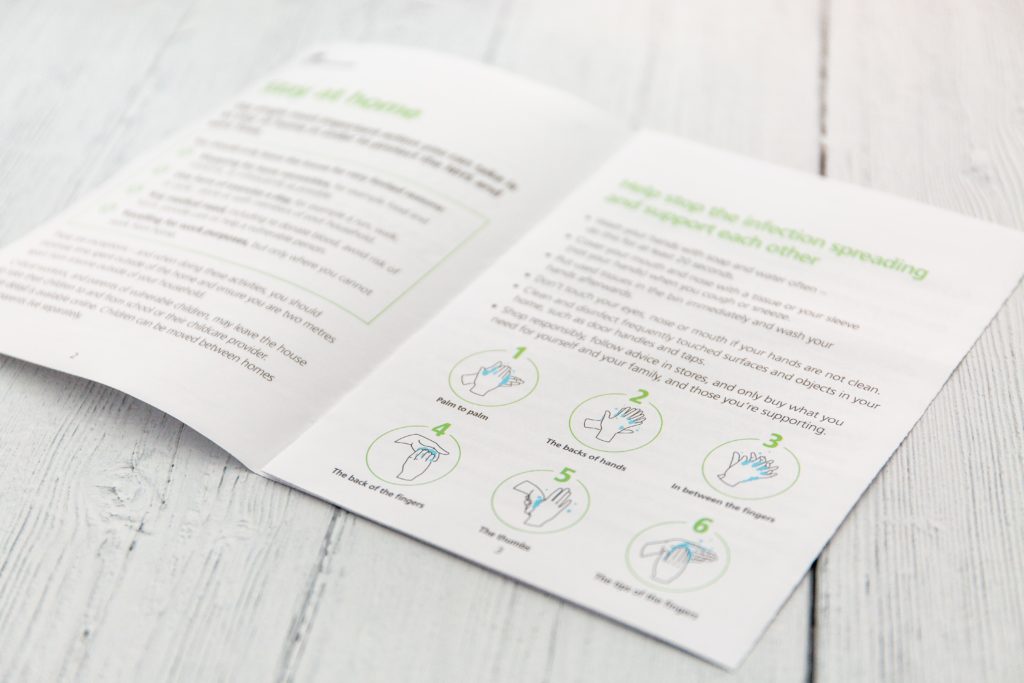
Meeting planners have been thrown a few curveballs over the past few months to say the least— from cancelled events and now new restrictions on in-person events. As we continue to adapt to COVID-19, it is crucial that meeting planners are up to date on the latest advice from the CDC in regards to hosting safe in-person events. We know you have many questions, and we are hoping to provide you with some answers based on guidance from the CDC.
How do you plan for an outbreak at an event?
The first step in planning an event in the COVID-19 era is by developing an emergency plan well before the event. The CDC recommends designating “an administrator or office to be responsible for responding to COVID-19 concerns. All staff and attendees should know who this person or office is and how to contact them.†Be sure to speak with local health officials about the event and have plans in place such as flexible refund policies for those who do not attend the event because they are not feeling well and plenty of supplies such as masks and hand sanitizer.
How do you prepare staff for the event?
Staff should be trained on all safety protocols. Virtual training is ideal to avoid contact with others, but if in-person training is necessary, make sure social distancing is possible. Consider using the CDC’s Interim Guidance for Businesses and Employers for guidance.
How many people can attend the event?
The CDC does not have a limit on how many people can attend an event, but be sure to check state and local policies on event capacity. Make sure there is plenty of space for event attendees to socially distance at all times, and consider an outdoor space as it is often easy to keep people spread apart and provides better ventilation than an indoor setting. Another way to limit the number of people at an event is by having entry times for staff and attendees.
Do attendees need to be tested for COVID-19 before the event or should their temperature be taken?
Testing all event attendees and staff is not recommended. Temperature screening and questionnaires asking attendees and staff if they have symptoms, have been in contact with anyone known to have the virus, or if they have travelled recently is recommended as long as it does not invade privacy.
How do you make sure attendees social distance at the event?
Hosting smaller events in larger spaces is one way to keep participants spread apart. It also helps to use designated entrances and exits to keep people from running into one another and use signs to indicate which direction guests should be walking. Avoid lines at places like bathrooms or registration areas. Techniques such as online check-in before the event can help to shorten lines and speed up the registration process. If lines are ever necessary, be sure to have signs and markings on the floor to remind people to keep six feet apart.
What can staff and attendees do to limit the spread of COVID-19 at the event?
Be sure that staff and attendees stay home if they are not feeling well as a first step in limiting the spread of COVID-19. Once at the event, be sure handwashing stations and hand sanitizer are easily accessible and that staff and attendees are utilizing these resources often. All staff and attendees should wear a face covering, especially it is not as easy to stay six feet apart from others.
What is the proper way to sanitize the event space before, during and after the event?
High touch surfaces such as door handles, sinks, drinking fountains and hand railers should be sanitized at least daily or as much as possible during the event. Other shared surfaces like countertops should be disinfected between uses. A cleaning schedule indicating what needs to be cleaned and when can help ensure that proper sanitation occurs during the event. EPA-approved disinfectants against COVID-19 should be used, but make sure there is proper ventilation so toxic vapors are not inhaled.
How do you safely distribute food at the event?
According to the CDC, “Avoid offering any self-serve food or drink options, such as buffets, salad bars, and drink stations. Consider having pre-packaged boxes or bags for each attendee.â€
What do you do if someone develops COVID-19 symptoms at the event?
Immediately separate anyone who develops symptoms at the event and provide them with clean disposable face masks. Close off all areas and disinfect anything the person with symptoms was in contact with. Contact local health officials about the potential case and be sure event attendees and staff are aware of possible exposure to COVID-19. Anyone who was in close contact with the potential case should also be separated.
How do I know if it is appropriate to cancel the event or not?
If the event space is not going to accommodate social distancing and it is not possible to find a larger space, it may be necessary to cancel the event or move the event online. If a large number of attendees are at higher risk of developing severe COVID-19 symptoms, it may be necessary to cancel or encourage these participants to not attend the event. If there is an outbreak in your community or in communities in which many attendees are coming from it may also be necessary to cancel. Ultimately, be sure to consult with local health officials when making this decision.
For more information, visit the CDC website.
Written By: Kelly Pawlak
How Hotels Can Appeal to Meeting Planners
August 19, 2020Venues,Corporate Social Responsibility,Risk Management,Event Trends and Tips
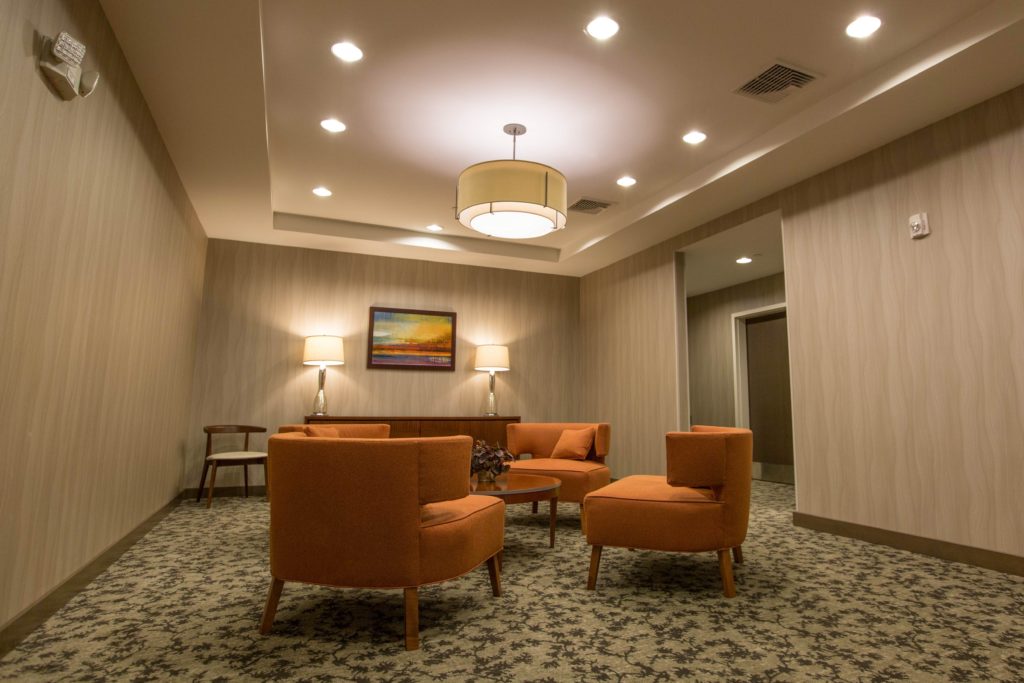
As the COVID-19 crisis continues and we adjust to this new normal, meeting planners are looking for spaces to safely host in-person events. In Lodging Magazine, VP of Product Development at Knowland Kristi White outlines what meeting planners want from hotels that are reopening.
Duty of care standards have a new level of importance to meeting planners than before. Whether a hotel has its own DOC standards or is following state regulations, these standards must be made clear to meeting planners. White emphasized that all hotel staff should be comfortable explaining these policies to guests and planners, and these policies should be easily accessible throughout the hotel and online.
Events are not going to be able to accommodate as many people as before, so as a hotel, it is important to follow local restrictions and requirements customers may have. “Prepare for a variety of options—whether six feet, seven feet, eight feet, or 12 feet of distancing,†White said.
Lower capacity in event spaces essentially means smaller events in larger spaces—potentially resulting in less revenue. White said it is important to work with the hotel’s revenue management team “to better understand how to price and optimize meeting space with the new social distancing guidelines.†A detailed plan for every scenario including room setup and number of rooms required will help sales teams sell events more seamlessly.
Self-serve buffets are not going to be seen at events in the near future, so hotels need to find ways to redesign banquet menus. In an article on Cvent, Megan Boley explains, “Seated dining could be an alternative option, if there are available staff members trained in sanitation and food-handling measures. These extra steps and layers of caution could tack on added cost to F&B, so it’s in the venues’ best interest to offer cost-effective solutions for food and beverage at events.†Pre-packaged meals and individually wrapped items are solutions to buffets, and White says these changes need to be clear in the hotel’s menu and pricing.
No matter what changes hotels make in preparing to host meetings, all changes and precautions must be clearly communicated to meeting planners and customers. Whether this be through email messages, a landing page, or creating an app for meeting planners and event attendees with safety information, all details should be easy to understand and access. White said creating an FAQ page and updating it as new questions come up is another effective way to communicate. It is just as important that sales teams are constantly updated on changes to effectively inform clients when selling events. As White said, “[planners] will want to book with hotels that have taken precautions and extra efforts to ensure their safety.â€
Hosting an event at your hotel may require more work than before, but luckily there are ways to safely and successfully host events at hotels during and beyond COVID-19.
Written By: Kelly Pawlak
Top 6 Tips for Adding Value
July 18, 2020Technology,Attendee Engagement,Event Trends and Tips,Virtual & Hybrid Events

Call it a blessing in disguise but, meeting and event planners have gotten to use their creative side when hosting virtual programs. This has mainly come in the form of video conference systems like Zoom, Microsoft Meetings, Skype, and more. While a virtual event seems pretty straight forward, transferring a sponsor’s or attendee’s benefits to a virtual platform is maybe not-so-straight forward. In this article, we are going to give you our best tips for adding value to your stakeholders, a lot of which are from our very own Virtual Planner Master Class. This Master Class brought together some of the brightest minds in meeting and event planning to help discuss these issues and come up with some amazing solutions.Â
- Classes and tutorials: Online classes and tutorials offer great sponsorship opportunities and real value to event attendees. Things like cocktail mixing classes, cooking classes, or craft classes will allow your event to be more relaxed and provide real benefits to participants.Â
- Digital sponsor ad placement: While banners and physical sponsorship apparel may seem longer lasting attendees’ minds, online banners can still make a huge impression during webinars and virtual events. Staying as a static or changing montage of banners, these can bring in more value to sponsors and your event.Â
- Sponsor entertainment breaks: Many more online meetings and events have begun to utilize breaks in order to give attendees a chance to stretch their legs and grab another cup of coffee. During the break, you could host a small concert or another unique form of entertainment that could feature sponsors’ products and services. Or, simply have a screen with sponsor logo exposure that is displayed during the break with background music. This is an easy and fun way to build value around virtual events.Â
- Educational opportunities: A great way to retain sponsorship value in an event is simply by educating attendees through quick company overviews and how they relate to the topic at hand. Tying in a sponsor to your event’s overall theme or mission would allow them to stay even more relevant in the minds of your audience.
- Integrated chat features: Specialized chat room features during, in between, or after presentations can allow your event attendees to get more involved and actively participate with other members. This doesn’t only make meetings more fun, but it also builds a level of trust and participation among people who may be more apprehensive to network from behind a computer screen. Sponsors could also be added to this feature to bring in more value.Â
- Online games centered around rewards : Another great way to spend an online break or happy hour is to host games like trivia or team-building exercises. These will be sure to get everyone to relax more and increase participation among attendees. Sponsors could send out prizes to winners or create questions that are centered around their brands.Â
Written By: Colin Jay
Make Your Virtual Meeting or Event More Desirable
July 16, 2020Technology,Attendee Engagement,Event Trends and Tips,Virtual & Hybrid Events
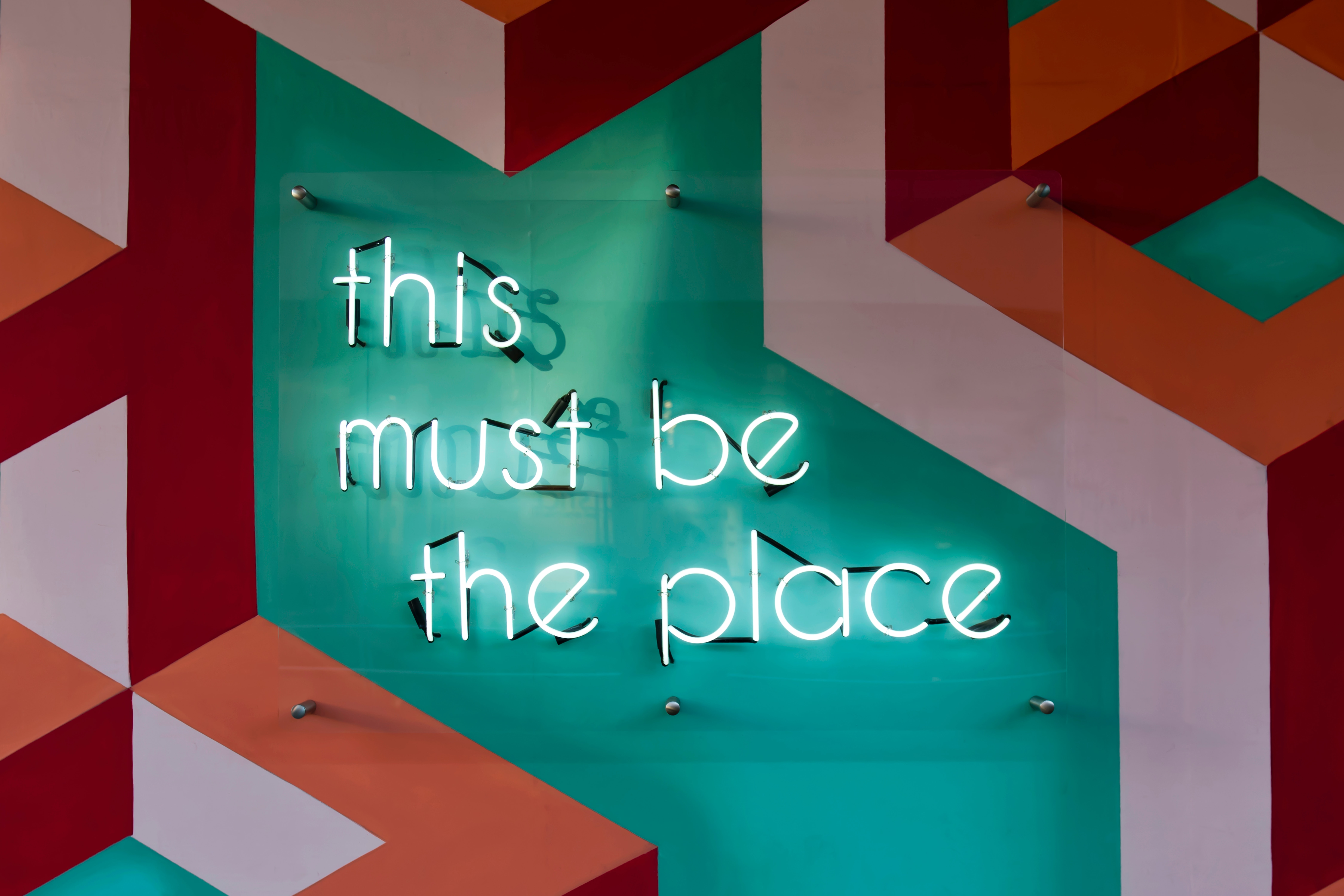
By now, anyone would be shocked to hear that someone has never attended a virtual meeting or event. But, we might not be so shocked to hear that “it was just ok†or “that could’ve been said in an emailâ€. We are finding that after months of moving events online, some are struggling to find ways to keep their content fresh and provide decent value to the attendees. It may require some out-of-the-norm thinking, but with proper use of technology and incorporation of quality education, a desirable and successful outcome is possible.Â
Technology is more important now than ever for hosting engaging meetings and events. However, we are finding that even the best of the best blue light blocking glasses can’t prevent “screen exhaustion†and “zoom fatigueâ€. It can be challenging to even know where to start when beginning to plan, so start with an informative and user-friendly event website. The event website should be a resource for potential attendees to learn about the event and register. The website can include the event itinerary and communicate to potential participants the value in attending the virtual event.Â
Pro tip for standing out: Be concise with the information on your website registration page. Someone should be able to figure out if this is a virtual meeting or event they want to attend within the first 60 seconds on your page. If your website is top notch, people will associate that with how your event will go.
Gaining participant interest and registration is an important first step, but keeping participants engaged with the use of technology once the event starts is even more important. So, sure the event team knows how to effectively use the technology. And if they don’t, hire someone! Nobody wants to join a virtual event and have to deal with the infamous “technical difficultiesâ€.
Pro tip for standing out: Make sure that there is powerful WiFi wherever the meeting, event, or presenter is streaming from. Although it would be nice in our personal lives to have a mute button, you don’t want a presenter’s mouth moving with the words lagging 2 seconds behind.
There are many new tools to provide a more “real†virtual experience. One of these being virtual reality. While this concept seems new to many of us, taking advantage of VR is not as difficult as it may seem. Give your attendees a tour of a museum or gamify a trade show floor using software. Take VR to another level by having event attendees create an avatar for themself that can walk around an event venue virtually to network or choose different breakout sessions they may be interested in.
Pro tip for standing out: Research new softwares or ways of live streaming. A screen share, although effective, is not always exciting anymore.
Since moving meetings and events online, it is a lot easier for an attendee to get up and walk away, or start working on something else. The point of your virtual meeting or event should not be to provide background noise to someone’s lunch hour. If that was true, our industry would be trending on Spotify Podcasts. Ultimately, you want engaged attendees that are learning something. If they feel as if they didn’t gain valuable knowledge, they will likely not be interested in attending future events with you. Try partnering with an educational institution or a highly valuable principal in the industry to add credibility to the event.
Pro tip for standing out: Not only does your educational speaker affect the quality of the event, but also the uniqueness of the content they share. People want solutions without having to read between the lines. Find someone who is able to speak on a different angle than attendees have maybe heard before.
Written By: Kelly Pawlak
Three Ways to Host Safe Events Now
July 15, 2020Technology,Venues,Risk Management,Attendee Engagement,Event Trends and Tips,Virtual & Hybrid Events
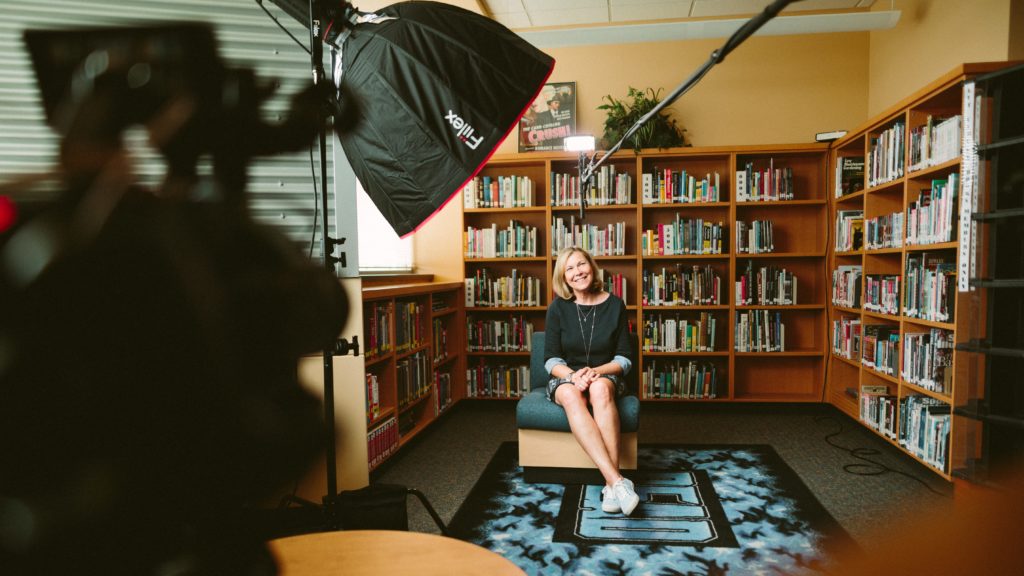
The events world has been shaken up for quite a bit now. As the industry progresses through the phases of reopening, there has been one common denominator: safety first...and that will likely be the new standard. Through remaining connected with our industry peers, we found that what almost everyone wants to know is “Of all the work-arounds due to COVID-19, which ones are here to stay forever?â€. Until the future of events unravels, here are three ways you can host an event now without compromising the safety of your stakeholders.
1. Try out a hybrid event
While virtual events aren’t going away anytime soon, a hybrid event might be the next stepping stone to ease people back into in-person events. Cannonballing into the pool of pre-COVID events might not set you up for success. Instead, you may find that doing a hybrid event, partially live and partially virtual, is a great way to dip your toes in. For instance, try having your presenter(s) broadcast live at a venue, yet keep attendee participation virtual.
At Virtual Planner Master Class, broadcasted live from The Old Post Office, the Ateema team hosted their event at a venue, just as one would for an in-person event. The main difference was that the presenters were speaking to the attendees through a room equipped with A/V broadcasting capabilities and their outfits included a mask as the finishing touch instead of a name badge. What didn’t change was the wow factor. Jamie Sowski, Marketing & Events Manager for The Old Post Office, was able to have a video production team pre-record their gorgeous and historic event space, play that video during the broadcast, and do a live voice-over just as if she was actually walking potential clients through the venue.
2. Think unconventionally when working with vendors
Okay, so you may not want to have a medieval-times-feast-style meal for safety reasons. However, that doesn’t mean you have to rule out catering. Whether your event is hybrid or strictly online, catering companies have plenty of creative ways for your attendees to indulge while also keeping them safe.
For virtual events, consider having boxed meals or DIY cooking kits delivered to attendees’ homes. This way, you are bringing the “IRL†factor while eliminating the potential for others (not equipped with PPE and lawfully required to meet sanitization standards) to come in contact with the food. To turn it into a hybrid event, consider broadcasting from a kitchen or bar with a live demo for the attendees to follow along with their goodie boxes delivered prior to the event.
Blue Plate Catering hosted a happy hour after Virtual Planner Master Class where they showcased their deliverable, seasonal offerings, and encouraged attendees to GYOB (grab your own beverage) while watching a mixologist demo their “sealed-with-safety†margaritas.
3. Design strategically for maximum comfort
In addition to the type of hybrid event we mentioned earlier, there are other ways to host a hybrid event. One of those ways is to allow a limited number of attendees to experience the event live with the event host and presenter(s). But before you go crazy with sending out these VIP invites, you need to envision the event design and event flow for maximum safety and respectively, maximum comfort.
So, how can you grab a venue that permits the ability to socially distance with ease? An answer to this question is outdoor events...bring your guests outside to the openness and fresh air. Or, opt for a large venue. Long gone are the days when a venue says “we've squeezed 100 people in a 500-square-foot room beforeâ€. Rooms with spacious floor plans are going to be better received by skeptical guests. It creates a feeling that their personal space is not threatened.
Also, give every guest a way to display their level of comfortability without the awkward do-we-hug-or-do-I-just-wave-hello moment. Support a local printer and create stickers with comical sayings like “Can’t Touch This†or “Free High Fivesâ€. When you create stickers for your attendees, don’t forget stickers for the floor...yes, you read that correctly. Having reminders on the floor that show people which way to walk and how far apart to stand is a great way to plan safe event flow and spatial comfort.
Written By: Emma McVady
Ideas to Improve Virtual Attendee Engagement
June 28, 2020Attendee Engagement,Event Trends and Tips,Virtual & Hybrid Events
Now more than ever, it is vital to understand how to make virtual events more appealing to stakeholders, sponsors, and attendees. A recent poll from a Virtual Planner Master Class showed that 60% of planners are considering shifting their events to virtual or hybrid. With so many businesses temporarily closing or shifting to a remote workforce, there is a demand for fresh ideas that can take ordinary online events to interactive digital experiences for your attendees. Here are some ideas that can paint your virtual event red against a white background.
Don?t Lose Sight of the Physical Aspect
Tangibility is not the first thing that comes to mind when you hear the word ?virtual? ? even more reason to utilize it. If you can manage to pull in a physical aspect, you will set your event apart from the rest.
Looking at a screen can be extremely 2 dimensional. To bring in that 3D element, you?ll have to get creative. If you are a baker, you may consider delivering a cookie kit to those who register for your cookie making tutorial event. That way, your consumers can physically follow along. Or, if you?re a librarian, you may consider delivering a physical copy of a book to your event goers, so your consumers can hold the book.?
There may not be many cookie-bakers and librarians reading this, but the same rule applies for your business?s virtual event. Give a tangible taste of your product or message. This creates value for consumers and adds an interactive element to your next virtual experience.??
Master Class tip: At the last virtual event we hosted, we delivered a tin of Garrett?s Popcorn to each panelist, which offered a positive incentive to the panelists while on the Zoom webinar.
Include Positive Incentives
Think about when you were in high school, around homecoming (I know, bear with me). You may have had spirit days, where you all wore hats to school or fashioned a crazy hairdo. It is likely that this made you more excited to come to school. Well, the same rule applies to virtual events.
Adding a twist to your event, like a virtual happy hour, gives people something to be more excited about. Therefore, people are more likely to express excitement for your event ? just like high school spirit week made you excited to come to school.
It would look something like this: you put together your event, you inform consumers that by attending your event, they will have both the event content and the positive incentive of your choice to look forward to. All of the people who tend to flake may say, ?hmmm? I don?t know if I?m up for it, but a virtual happy hour afterward is pretty cool ? can?t miss that. Alright, I?m in!?
Master Class tip: In order to encourage people in the industry to stay connected at this time, we?ve been offering an optional virtual happy hour at the end of each online event. We normally host monthly networking events and meet-ups, so it makes sense for us to continue to connect people virtually even during this time.?
Broadcasting a Virtual Experience?
Virtual experiences, like cooking demonstrations, comedy lessons, and cocktail demonstrations are all great tools to get your audience interested in attending your virtual event.?
Similar to positive incentives, virtual experiences add excitement and value to the event. With something like a virtual happy hour, the incentive is simply having fun. However, adding a virtual experience or lesson entices people by giving them the opportunity to learn something.?
You can market your virtual event by letting prospective attendees know that they will have knowledge of something new to take away afterward.?
Master Class tip: Master Class Tip: At our Virtual Planner Master Class, we partnered with Live Art International to create a unique virtual experience with DIY Wine Glass Painting Kits. Two days before the event, early registrants received a wine glass in the mail to self-decorate, along with painting materials and an instruction guide. Then, we encouraged everyone to bring their glass to our virtual happy hour. To take things to another level, we gathered selfies of everyone with their wine glasses and put them into a collage to be shared on social media.?
Use Small Group Interaction as a Deliverable
What sets an event apart from a lecture? The answer is simple: interaction. It is important to include small-group opportunities in your virtual event for consumers to see value in it. Speaking to other like-minded individuals makes consumers feel that they are a part of something, and that ?something? is your brand.
For optimal engagement, it is important to preload poll questions to captivate your audience and gather feedback. If you are looking to gather any poll feedback, you should launch the poll with at least 5 minutes of programming left.
Small groups will give your event the value of socialization, brainstorming, discussing, and more. This value is the perfect deliverable to market to consumers. Utilizing Zoom breakout rooms shifts the event from passive to active. Make it known that your event is different because it is not just a lecture, but a collaborative colloquy.
Master Class tip: To encourage small group interaction at our virtual events, we break the group into multiple smaller groups. We shuffle people around intermittently to offer maximum networking opportunities. Our timing formula changes based on the content and audience of the event, but we found moving people around keeps them engaged for much longer than a presentation format does.
Author: Emma McVady, Ateema
5 Trends To Think About While Pivoting Back to Live Events
June 27, 2020Technology,Venues,Attendee Engagement,Event Trends and Tips,Virtual & Hybrid Events
As companies try to resume conducting business under the new normal, it will be a learning curve for all including event planners, hosts, vendors, venues, and attendees. Adjusting to the new norm post-COVID-19, those that are able to be flexible, adaptable and can pivot during these challenging times could be the most successful!  Keeping an open mind to new ways of hosting events which includes human interaction can be very advantageous as the industry plans for live events. Here’s our projections for what trends we might see when we start meeting in person again...
Never Enough Precaution
Besides checking your typical details with vendors, suppliers, and the venue, safety and security processes will now be incorporated. These safety protocols should be communicated to your guests to ensure them that their health and safety are at the forefront. It is now standard protocol to have a COVID-19 event checklist that includes temperature checking of employees and guests, in addition to requiring all to wear a face covering. There will be a dramatic difference with how everyone interfaces with each other as well. Long gone are the days where greeters are handing out materials such as maps and agendas as events will establish more self-service features for their participants. In addition, hand sanitizer will be more readily available and very much appreciated. Guests might be limited to bringing their belongings as ensuring the safety for both your guests and employees will go a long way. 
Innovative Food Options
It is important that participants feel all safety precautions were considered when it comes to the food being served at the events. As part of taking precautionary measures, buffets may not be a popular option to avoid serving utensils having multiple touches and to avoid people standing in lines. But don’t worry, planners are looking at creative meal options. Boxed lunches or pre-packed grab and go individual meals will be offered as well as seated meals. Planners will also be thinking outside of the box such as leveraging favorite food trucks or catering from your popular restaurants with carry out style options to still make it an enjoyable event. Although seating may be more restricted in numbers at a table, who says you can’t have a great experience with a smaller intimate group which may encourage better networking and connections?
Behind-the-Scenes Workers Now in the Spotlight
Pre-COVID 19, it was all about seamlessly transitioning the events with flipping the rooms quickly to avoid any type of event distractions. Post COVID-19 attendees might want the staff to be more visible. Seeing them frequently wiping down high touched spaces and continuous cleaning will now be more than welcomed. As well, I’m sure attendees won’t mind the cleaning crew to spend a little extra time in between room flips.
Empty Rooms a Good Thing Now?
In order for participants to feel comfortable to be in the same room with others while allowing the appropriate social distance, it is now acceptable and expected that rooms are not filled to capacity to reassure their guests. Brainstorming possible event room layouts with bigger rooms for less people and to how to space out the furniture will be key. Foot traffic directions that include warning signs that show “high traffic†or “high touch areas†will be part of the event set up too. Lastly, event planners will need to consider the staff’s ability to wipe down as frequently as possible based on venue layout.
Hybrid! Hybrid! Hybrid!
As we adjust to our new norm, hybrid events should be considered as an option. Hybrid events combine live people with virtual attendees and with budgets that may be more limited to hosting smaller groups this still allows for that personal connection. Something else to consider is combining live presentations and entertainment broadcasted from different rooms as that will help avoid having too many people in one room at a time. An additional benefit to hosting hybrid events, is the ability to be more flexible because the resources that you will be depending on will be more limited such as security, staff, catering, PPE, cleaning supplies, etc. Hybrid is a great alternative option for those who may still fear gathering with other people but also an opportunity to keep your event participation rate high.
How to Craft Your New Site Visit Checklist Post COVID-19
June 26, 2020Venues,Event Trends and Tips,Virtual & Hybrid Events
Cleanliness 
As businesses slowly begin to reopen, it will be important as you plan your events to consider the health and safety of the guests. At this point, there should be more evident measures that the venue has or is doing to ensure the health or safety of both their staff and guests. As you complete your site visits, evaluating the protocols they have put in place such as cleanliness of the bathroom should be considered. Ask them, how often will the bathrooms be cleaned and disinfected during your event? In addition, you should evaluate the safety protocols for their staffers, will they be wearing masks now as they pass around appetizers and interface with the guests? What are they doing to take precautions with food preparation  and have serving methods changed, we already know buffets are a thing of the past - will individual food containers be a thing of the future?
Social Distancing
Will events be limited to 25% capacity, 50%, or are we concerned at all? Other things to consider is venue space and options to accommodate social distancing requirements. Does the venue have outdoor space to use, how tall are the ceilings in the room(s), how updated is the ventilation system and air filters, can we use multiple rooms to allow social distancing. How will the seating or furniture arrangements be changed to limit the amount of guests from being in too close proximity of each other. Will attendees be required to wear masks and what protocols are in place to encourage attendees to self monitor themselves prior attending the event and what is the protocol on how to handle anyone that experiences symptoms during the event.
Tech capabilities
Every planner looks for in-house A/V capabilities when on their site visit, but what we should be looking for now is built-in cameras for broadcasting our event online. As more and more businesses open their doors, we need to remember that not everyone will feel comfortable going back out right away. People will come back in waves and it will depend heavily on the individual generation, personality, location, upbringing, and their overall comfort level with COVID-19. Providing alternate solutions such as hybrid events should be kept in mind thus the importance of venue tech capabilities. To increase a good turnout technological solutions will allow planners to incorporate both live and virtual events.
In-House or Preferred Vendors
With any venue that we are selecting for our next in-person event, we must find out if they use in-house catering and A/V, or do they outsource to their list of preferred vendors. One would hope that  the  venue will try to extend whatever new health & safety policies and set the expectations with their preferred partners. While leveraging in-house services may be more attractive over having several vendors in play to limit the possible transmission of coronavirus it is important that your client feels confident with the health and safety measures that are put in place for all resources used. Some venues will be required to utilize union resources so it will be important to confirm safety measures are put in place for any vendor whether it is onsite resources, offsite resources and union resources.
Location
As the largest cities in America are still on lockdown, planners are looking to other less populated destinations for their next event. Not only will they be opening earlier, but it will be easier to incorporate social distancing in a more spread out area than your normal big city such as New York. It will be important to ask your venue what protocols they have in place for things such as public elevator access. Can the event planner incorporate any regulation on the number of people in the elevator at a time? Will the area be designated just for event participants or will multiple events be taken place and/or open to the public. Is your event in a private or semi-private space will be more important than ever.  


